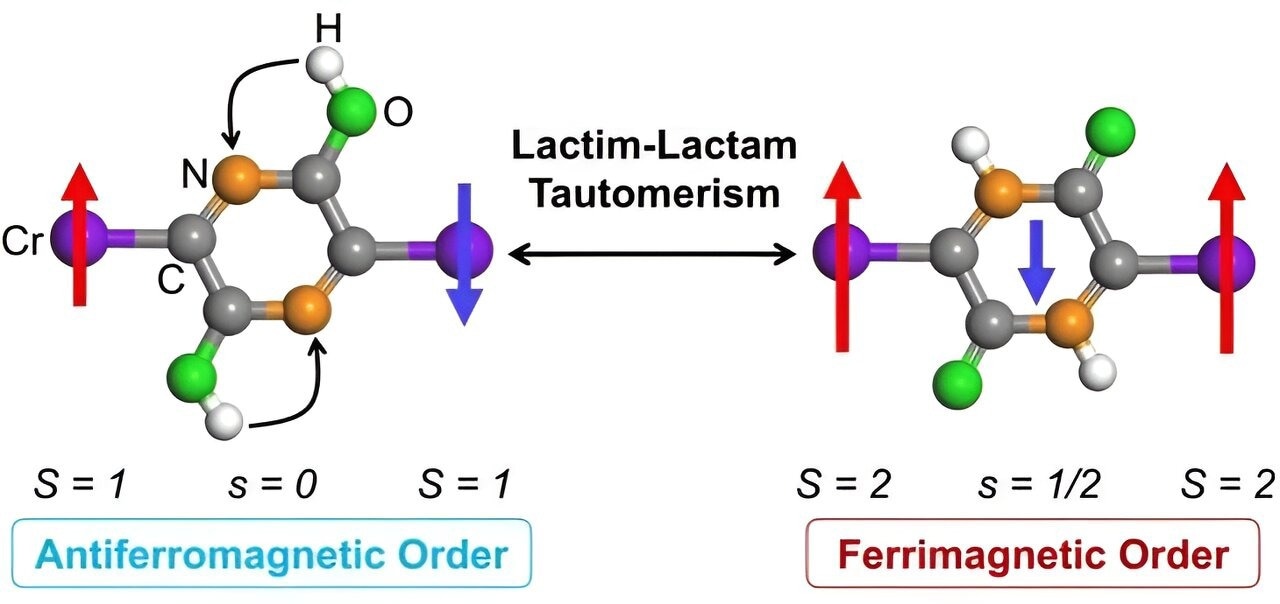An innovative chemical technique for two-dimensional metal-organic lattices has been created by a research team at the University of Science and Technology of China (USTC) of the Chinese Academy of Sciences (CAS), under the direction of Associate Prof. Li Xingxing and Prof. Yang Jinlong. The results were recently published in Nano Letters.
 Schematic illustration of the magnetic phase change in a 2D metal-organic lattice induced by the lactic-lactam tautomerization reaction. Image Credit: USTC
Schematic illustration of the magnetic phase change in a 2D metal-organic lattice induced by the lactic-lactam tautomerization reaction. Image Credit: USTC
Developing an effective method to reversibly manipulate the spin order of materials is critical to the field of spintronics. While there have been some physical approaches put out, there have been major obstacles in the way of chemically doing this.
Researchers suggested manipulating the magnetic phase transition in two-dimensional (2D) organometallic lattices reversibly by employing the widely known lactim-lactam tautomerization process. This discovery opens new avenues for manipulating a material's electrical and magnetic properties.
Lactim-lactam tautomerization causes an organic linker’s spin state to change from a singlet state to a doublet state.
When it comes to controlling the spin state of materials, chemical approaches provide a number of potential benefits over physical methods. For real-world applications, it is more feasible since it can be carried out at room temperature. Furthermore, accurate control over chemical reactions allows for even more exact control over the spin state of materials.
The researchers employed a compound known as 2D organometallic lattices in their investigation. It has a special structure that enables lactim-lactam tautomerization to alter its magnetic phase. It has been shown by researchers that this reaction can be used to reversibly change the material’s magnetic state from antiferromagnetic to ferrimagnetic.
The team’s discoveries have significantly contributed to this area of study. Future research into additional chemical reactions that can affect a material’s spin state could lead to the development of ever more sophisticated spintronic devices.
Journal Reference:
Li, J., et al. (2023) Chemically Controlled Reversible Magnetic Phase Transition in Two-Dimensional Organometallic Lattices. Nano Letters. doi:10.1021/acs.nanolett.3c03060